S T A I N E D G L A S S A N D P A T C H W O R K S
1 9 5 6 - 1 9 7 1
In 1956, Madeleine Novarina was commissioned to produce sixteen stained glass windows for the church of Vieugy (Haute-Savoie), which was being restored. She decided to use the modern material of glass slab with a reinforced concrete frame which had previously been used by four artists, including Fernand Léger in 1951 and Manessier in 1952. Madeleine Novarina began to learn the composition technique of glass slabs in the workshop of stained-glass maker Jean Barillet. For the church of Saint-Martin Vieugy, she chose semi-figurative, semi-abstract program. She thus became, aged 32, the first woman in the history of art to make all of the windows of a church and in an absolutely modern style. From 1957 to 1959, she produced stained glass windows for the churches of Marignier Villeparisis, Annecy and Thonon-les-bains.
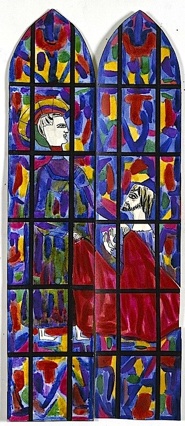
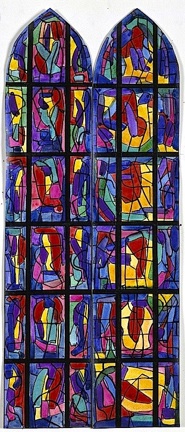
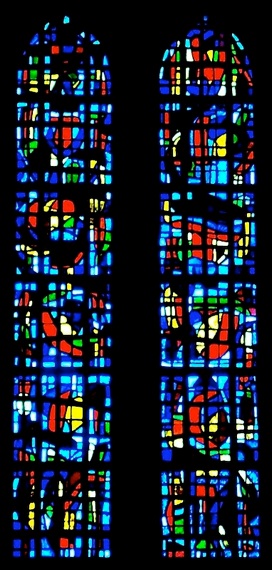
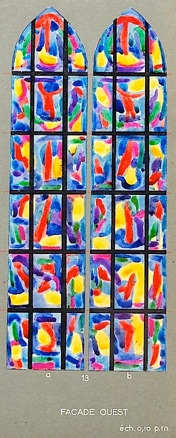
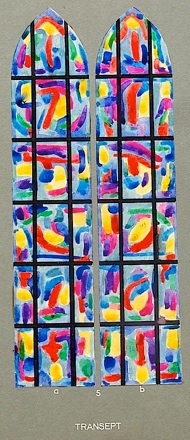
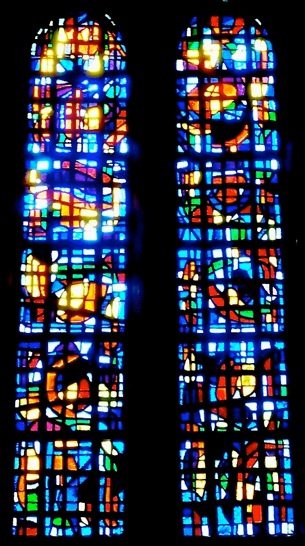
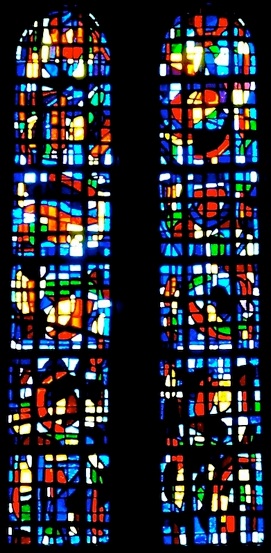

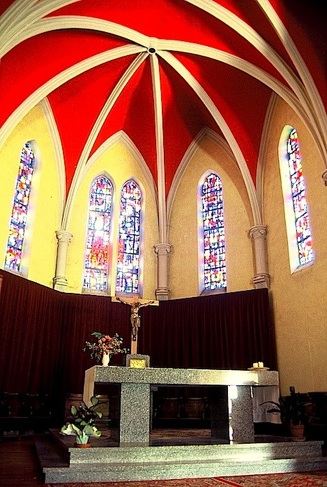
Models of the semi-figurative, semi-abstract stained glass windows of the church of Vieugy (Haute-Savoie), 1956
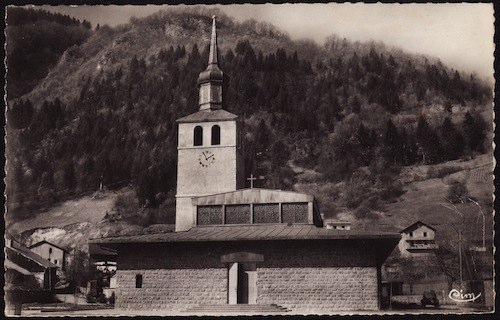
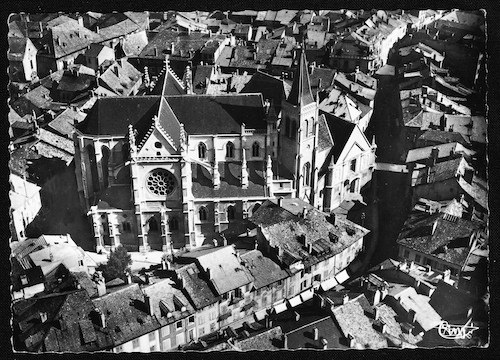
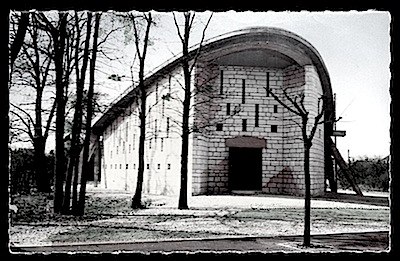
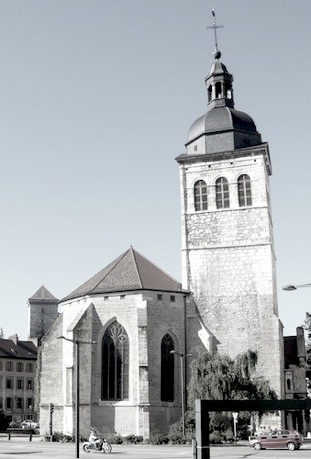
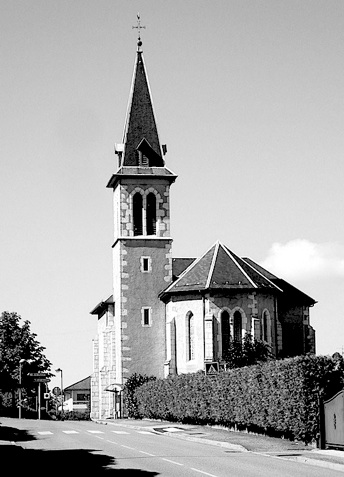
Basilica of Thonon-les-Bains: a stained glass window made by Madeleine Novarina in 1959
(Photo: Ray-Delvert)
Marignier’s Church (Haute-Savoie)
Church of Vieugy (Haute-Savoie)
16 stained glass windows made by Madeleine Novarina in 1956
St. Maurice’s Church in Annecy (Haute-Savoie)
Notre-Dame de la Paix’s Church (Our Lady of Peace) in Villeparisis (Seine-et-Marne), stained glass windows by Madeleine Novarina, 1958
Architect: Maurice Novarina
In 1958, her brother, Maurice Novarina, built a church in Villeparisis and asked her to make the stained glass windows. She created models inspired by heraldric art to shape light shields and mystical coats of arms with slabs of glass.
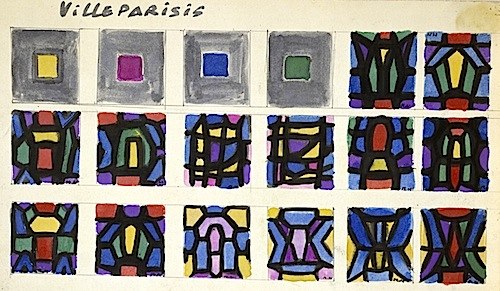
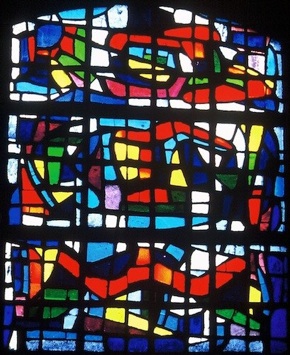
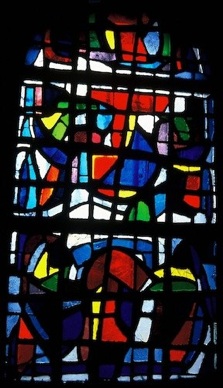
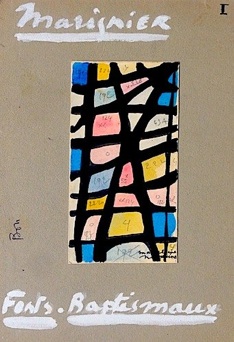
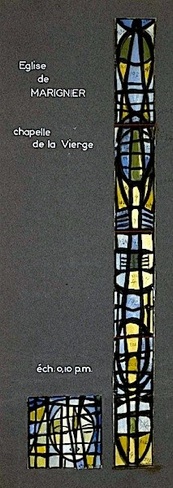
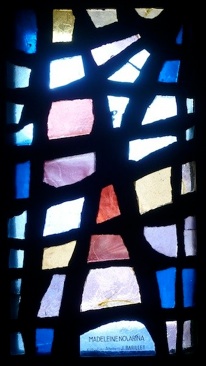
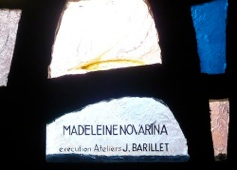

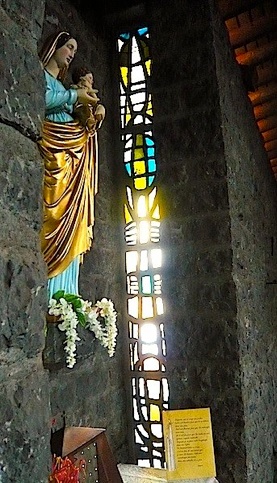
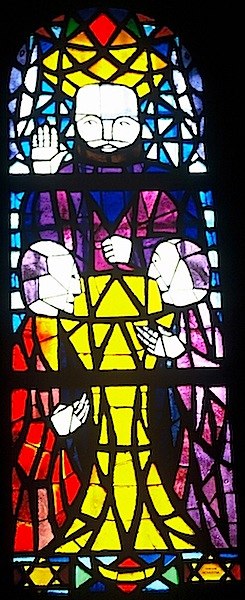
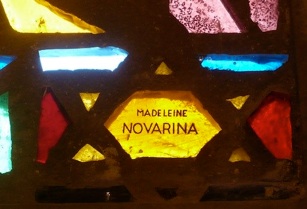
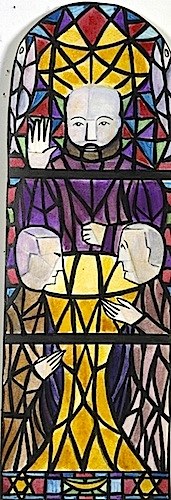
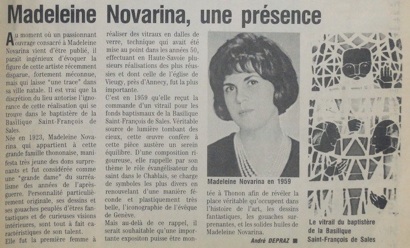
St. Francis of Sales fisher of men. Model and stained glass window "as a playing card"
Basilica of Thonon, 1959
Patchworks
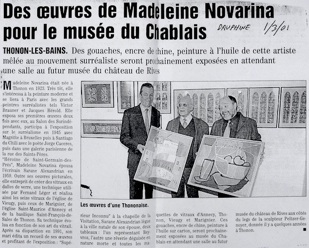
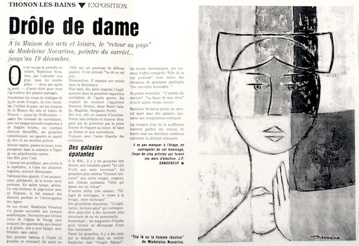
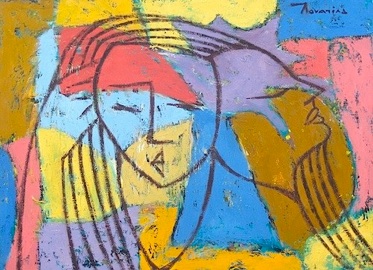
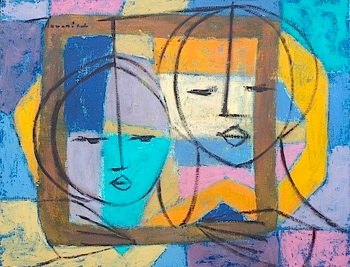
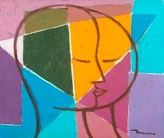
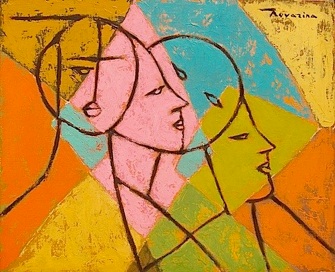
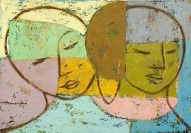
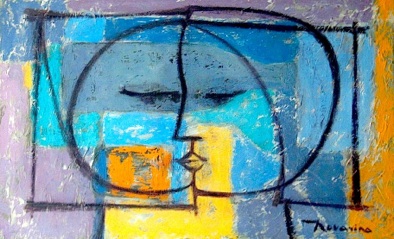

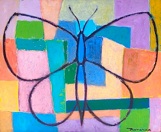
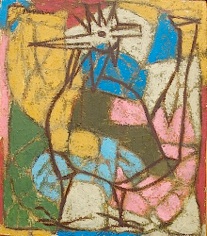

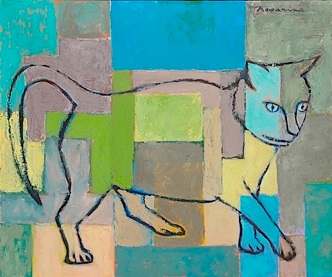
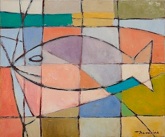
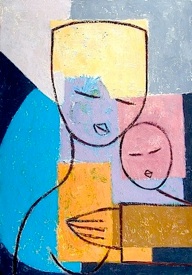
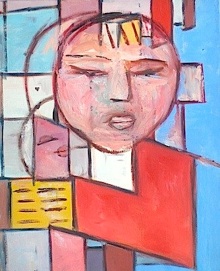
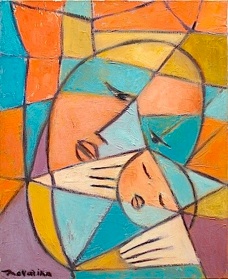
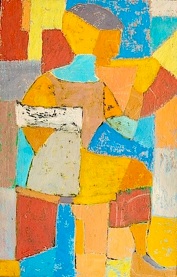
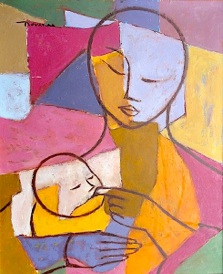
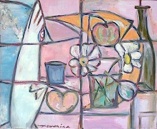
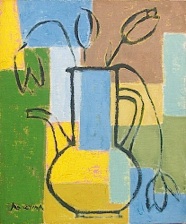
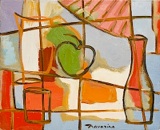
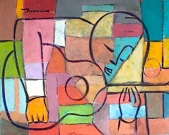
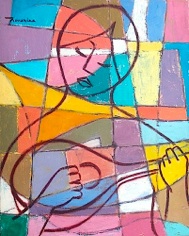
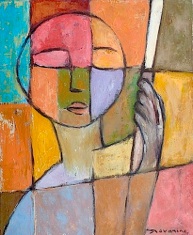
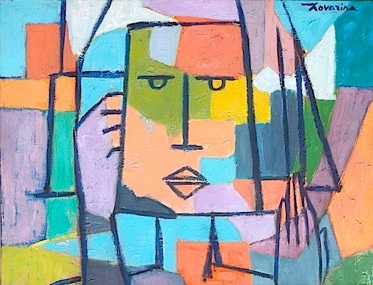
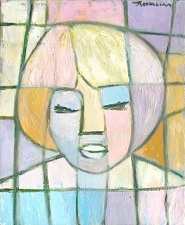
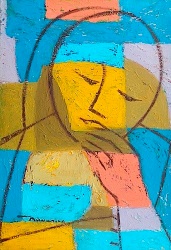
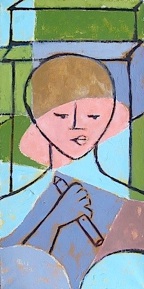
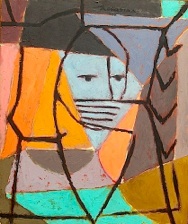
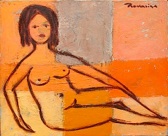
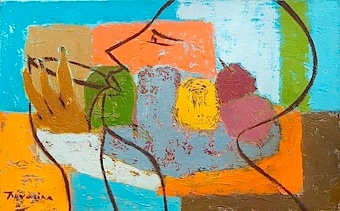
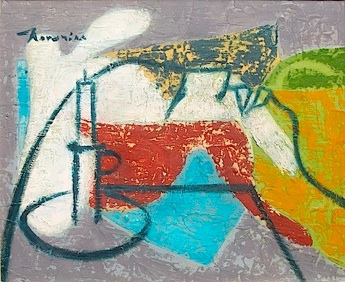
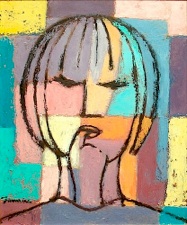
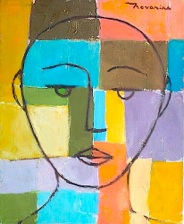
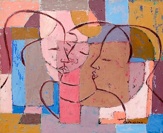
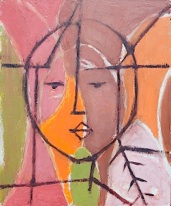
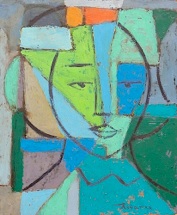
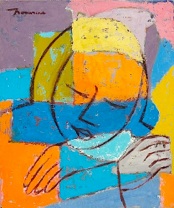
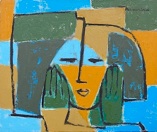
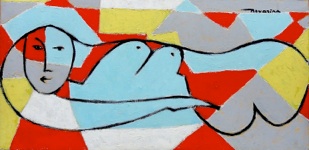
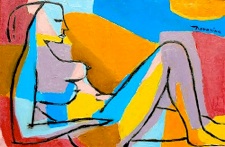
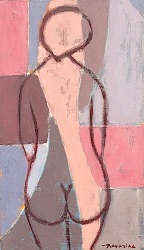
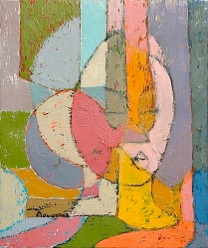
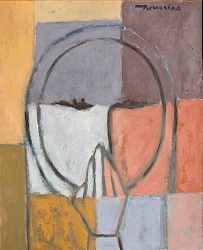
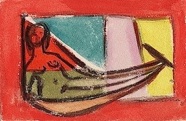
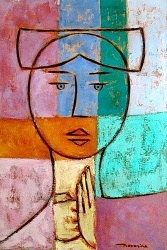
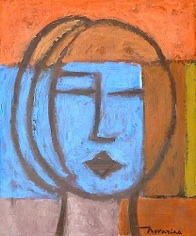
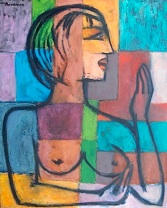
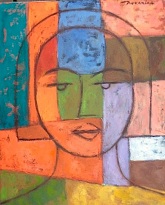
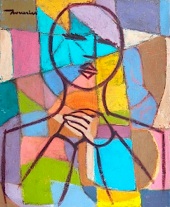
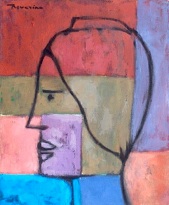
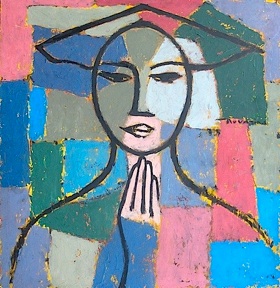
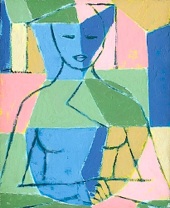
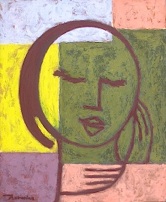
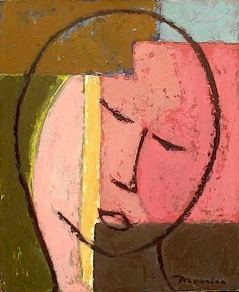
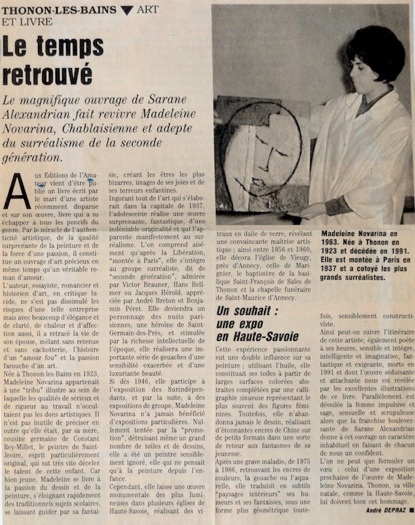
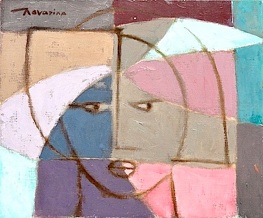
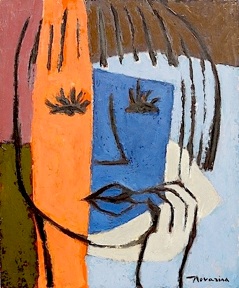
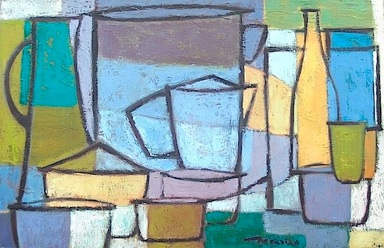
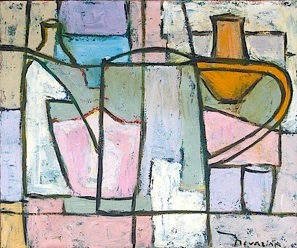
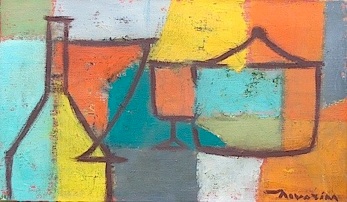
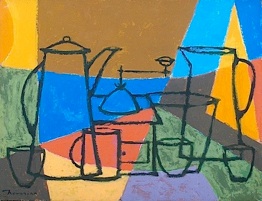
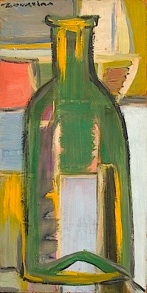
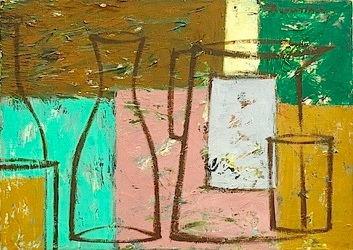
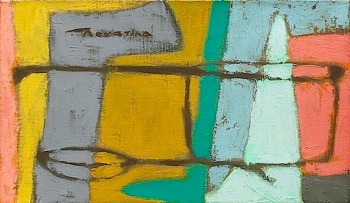
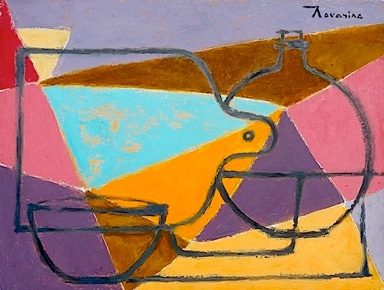
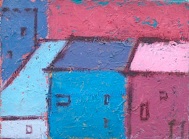
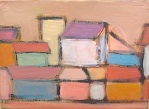
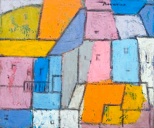
Circus
After four years of working on stained glass, the painting of Madeleine Novarina evolved. She stop painting with gouache and started painting with oil. She embarked on a series of paintings she named "Patchworks" similar to her semi-abstract, semi-figurative models. These are oil paintings whose background consists in geometric spots of various colours, gathered together like pieces of glass in an abstract stain glass window. The patchwork is always supplemented by a calligraphy: Here, a black line, with full and loose, outlines a woman's head, a maternity, a utensil, an intimate scene or an animal.
Madelonnettes
The "Madelonnettes" series refers to a term whose meaning she learnt from Sarane by Alexandrian: Madeleine was the saint patron of repented prostitutes, later called Madelonnettes (Little Madeleines). From the fifteenth century onwards the term both applied to the sinful women whose lives ended in a convent and the nuns who welcomed them. Some kept on their made-up faces traces of their life of debauchery (Madelonnette with green hair, Madelonnette with a blue cheek, Madelonnette in tears, etc.). Others are novices, looking innocent (Madelonnette with her finger in the mouth, pensive Madelonnette, glancing Madelonnette, etc.).. Madeleine Novarina was all the more ready to paint Madelonnettes that around this time there was a love hotel at the end of the rue du Débarcadère, where she lived with Sarane Alexandrian. Every day, a dozen of streetwalkers roamed the street waiting for clients and they greeted her when she was coming out of her building. She entertained herself by watching them and giving them all sorts of nicknames.
Madeleine Novarina, text by Sarane Alexandrian, Les éditions de l’Amateur, Paris, 1992, p. 117
"Some of her paintings (le Colloque des ustensiles, l'Union du flacon et de la planche à pain – utensils symposium, union of the bottle and the breadboard, etc..) Referred to household utensils ⎯ pitchers, coffee makers, glasses, candle holder, chopper, etc.. ⎯ and she claimed that they expressed her "utentialism". I objected that she should say "utensilism" but she maintained her neologism and explained to me: "No, I am saying untentialism as an analogy with existentialism. Existence subordinates women to household utensils and in these paintings I express my rebellion against this condition. "
In 1958, Madeleine Novarina and Sarane Alexandrian attended the performance of a travelling circus whose entire show was performed by the boss, his wife, their two children, his sister-in-law and three animals. For the following two years, probably under the initial impression, Madeleine Novarina drew circus pictures: jugglers, contortionists, clowns, musicians, animal trainers, etc.
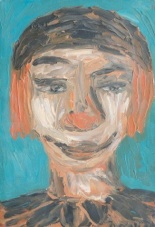
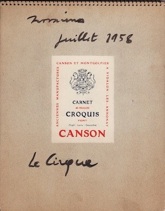
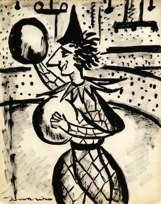
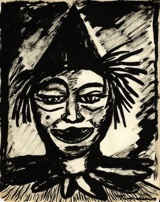
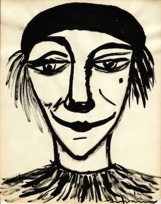
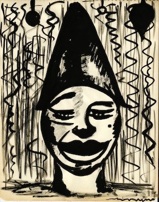
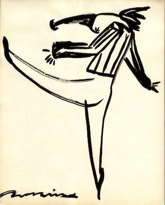
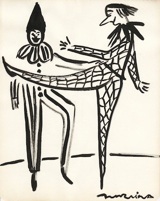
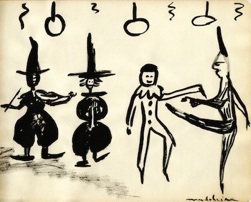
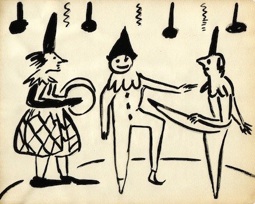
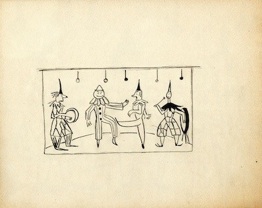
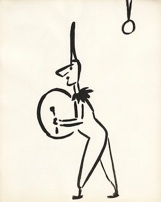
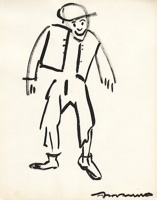
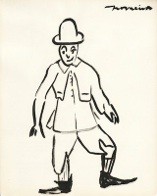
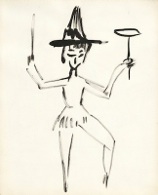
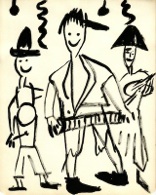
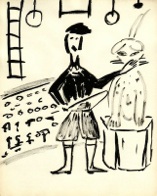
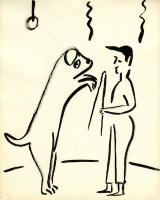
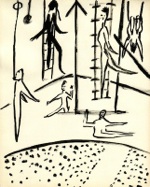
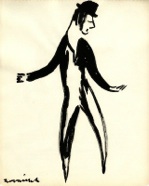
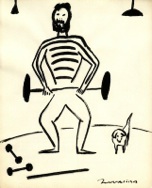
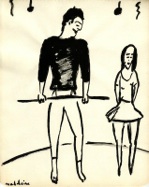
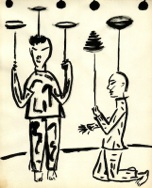
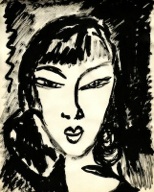
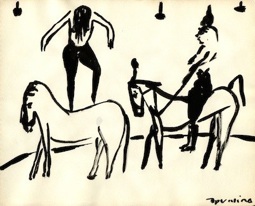
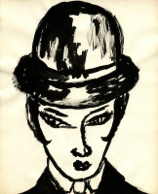
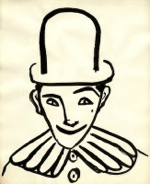
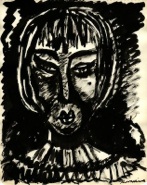
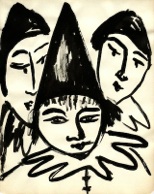
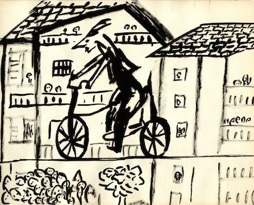
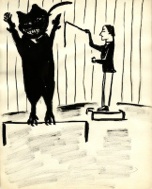
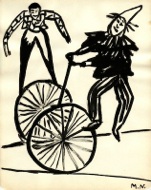
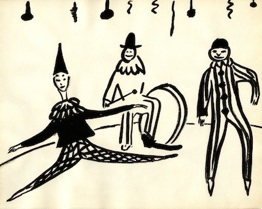
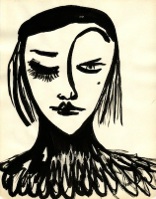
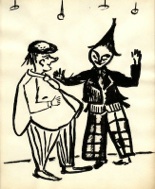
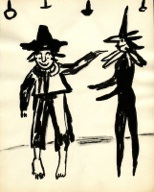
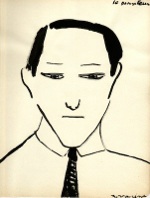
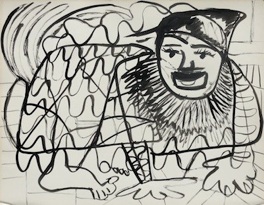
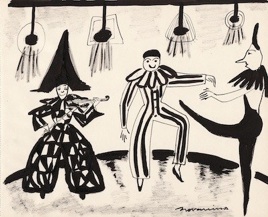
Mr. Sun and Mrs. Moon, oil on canvas, 1964
Christophe Dauphin’s Collection
Utentialism
St. Maurice’s Church in Annecy
Marignier’s Church
Notre-Dame de la Paix’s Church (Our Lady of Peace) in Villeparisis
Basilica of Thonon-les-Bains
Churches of Vieugy, Saint-Maurice d'Annecy, Marignier Villeparisis Basilica of Thonon-les-Bains,
Patchworks, Madelonnettes, Ustentialisme, Circus
Church of Vieugy
Model of the stained glass window of the baptismal font in Marignier’s Church
(Haute-Savoie), 1957. IMEC/Fonds Alexandrian
Femme à la tête ovoïde
La plus sage des vierges folles,
collection Anne et André Mérola
La Charité de Saint Martin
One of the two totem-like stained glass windows in Marignier’s Church (Haute-Savoie)
and its model, 1957
IMEC/Fonds Alexandrian
Models of the stained glass windows "in light shield" for Notre-Dame de la Paix in Villeparisis, 1958
The two stained glass windows of the funeral chapel
of the St. Maurice’s Church in Annecy
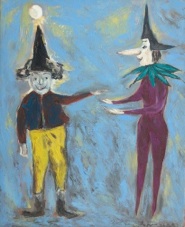
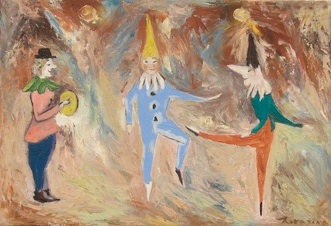
Pschtt ! ou la mystérieuse, 1962
La joueuse de mandoline, 1962
La buveuse d’oubli, 1962
Union of the bottle and the breadboard, 1963
Maternité cannibale, 1964
The Utensils Symposium, 1966
Resurrecting still life
1966
Madelonnette dreaming of the future, 1964
Little Madeleine in tears, 1965
Little Madeleine with a blue cheek, 1966
The Cat departs (Le Chat part), 1966
Le Guitariste, 1967
La Reine mère, 1970
La Boudeuse nue, 1970
La Féministe en action, 1971
Le Papillon des jours heureux
1965
Tope-là, ou la femme résolue, 1960
Collection Christophe Dauphin

La Première des Madelonnettes
1961
Souvenir d’un village de
montagne, 1961
La pensive, 1963
Femme se couvrant la bouche
1954
Le Coq glorieux
Good friends, (Les Bons amis) 1967
Mère dorlotant son enfant
Les retrouvailles, 1964
Une amie de la nature
L’Assoupie
Salut à tous
Nu serpentin
Nature morte à la pomme
1962
Le Rouge à la joue
Le Poisson bien-aimé
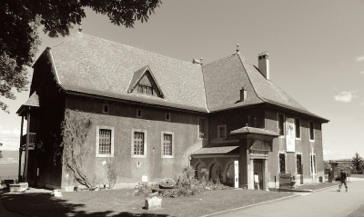
Museum of Chablais, Thonon-les-Bains (Haute-Savoie)







Autour du lieu (around the place), Librairie Galerie Editions Racine
Paris, 2008, preface Sarane Alexandrian



